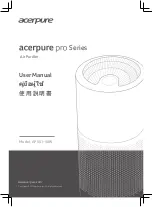
System components
required
Valve assembly for 2-conductor
systems (accessory)
In 2-conductor systems, cold or
warm medium is fed through
the heat exchanger into the unit
and cold or warm air can be
discharged. Control is provided
by the 3-way valve assembly.
It consists of the electrically
actuated valve head and the valve
body. If the head is electrically
activated, it actuates the body,
which routes the medium into
the register. If the temperature is
reached, the head is switched off
and the medium is fed past the
heat exchanger through the bypass
. The bypass serves to ensure the
minimum medium flow rate for the
chiller or the heat pump.
Valves for hydronic balancing
The calculated individual pressure
losses in the pipeline network
layout for each individual unit are
adjusted to the entire system with
hydronic balancing valves to be
provided by the customer. The
nominal flow rates for the medium
adjust to the values needed as a
consequence of the pressure loss.
The time between being fully
open and fully closed can be
approx. three minutes.
NOTE
Connection for
medium piping
■
The connection of the piping
by the customer is made on the
rear side of the units.
■
For the purpose of servicing,
connections must be equipped
with shut-off valves and the
medium flow rate adjusted
using hydronic balancing
valves.
■
Additional automatic bleed
valves must be provided in the
supply and return flows at the
installation's highest point.
■
The medium piping must not
exert any structural load on the
unit.
■
The pipe connections must
not impose any thermal or
mechanical stresses on the unit.
If necessary cool the piping or
support with the second tool.
Automatic bleed valves
The unit has one or two manual
bleed valves on the collector pipe
of the register.
The unit can be bled separately
after the system has been filled.
Automatic bleed valves must also
be installed at the highest point in
the collector line.
Glycol tolerant bleeding valves
are necessary when using
media which contain glycol.
CAUTION
Anti-freeze protection
(accessories)
A water glycol mix is generally
used as the medium for a cold
water system. Depending on the
glycol type and quantity used, the
viscosity changes, the pressure loss
increases and the unit's cooling or
heating capacity reduces.
All system components must be
approved for use with glycol.
Diaphragm expansion vessel
(MAG)
To avoid pressure fluctuations
because of temperature changes
when not operating, diaphragm
expansion vessels filled with
nitrogen (moisture neutral) must
be integrated in the system.
The product and safety data
sheets of the glycol type which
is used must be obeyed during
use and disposal.
NOTE
Bleeding valve
Outlet
Inlet
Manual bleeding
valve
Outlet
Inlet
Manual bleeding
valve
13
Summary of Contents for KWK 100-4R
Page 2: ......






































